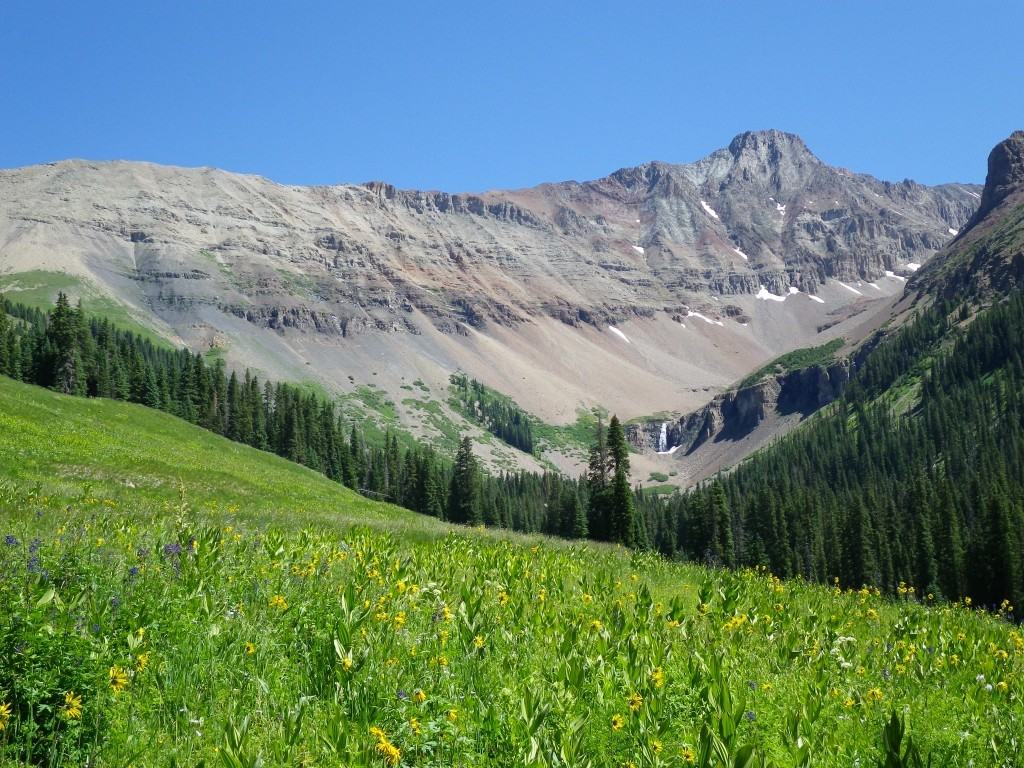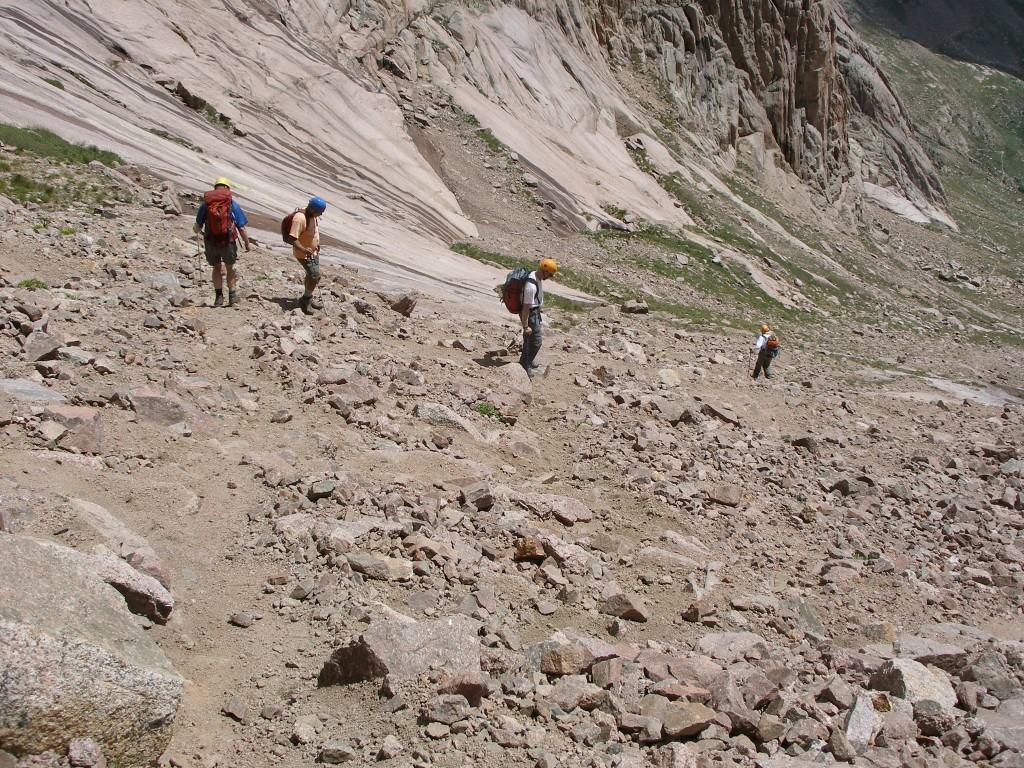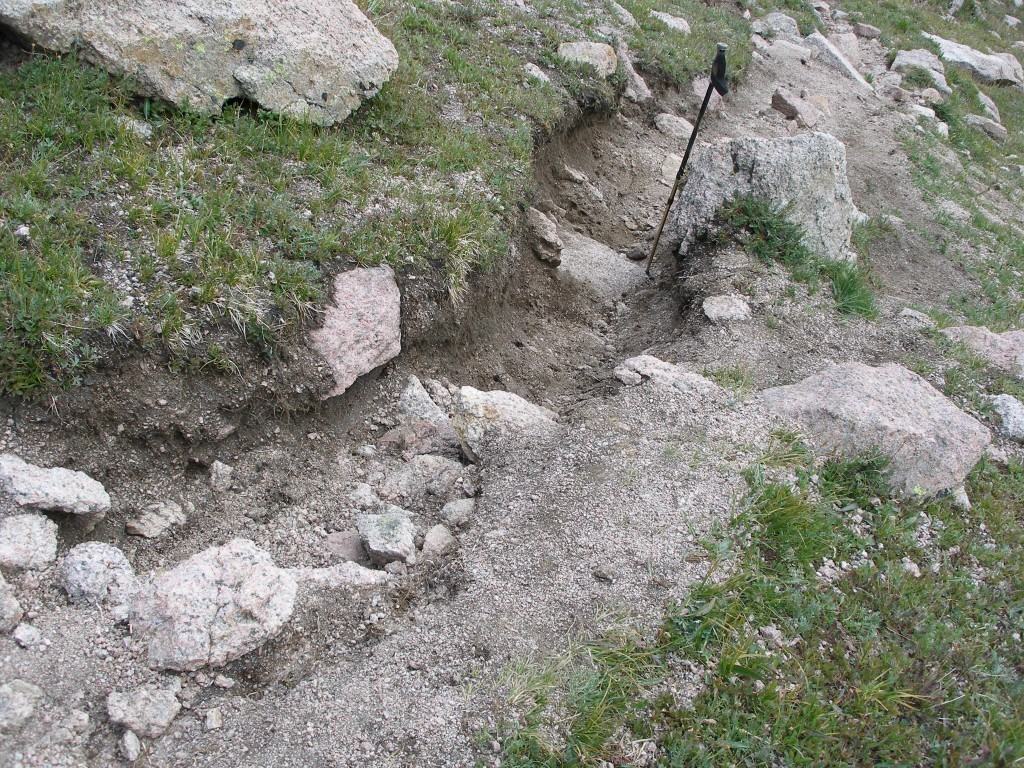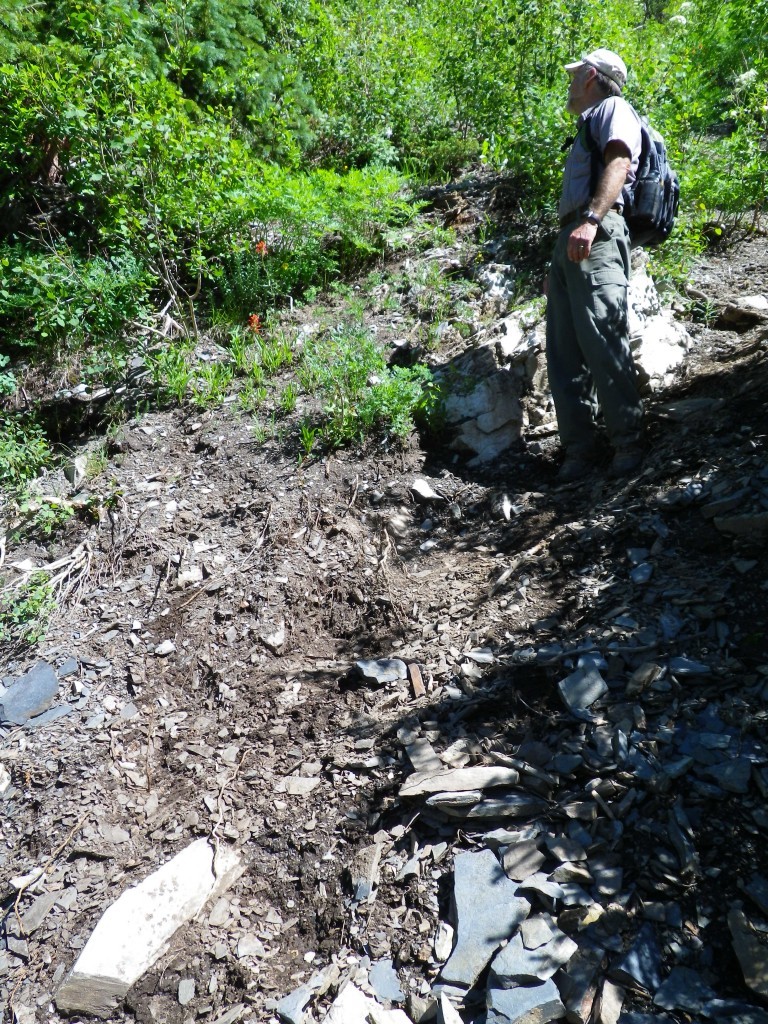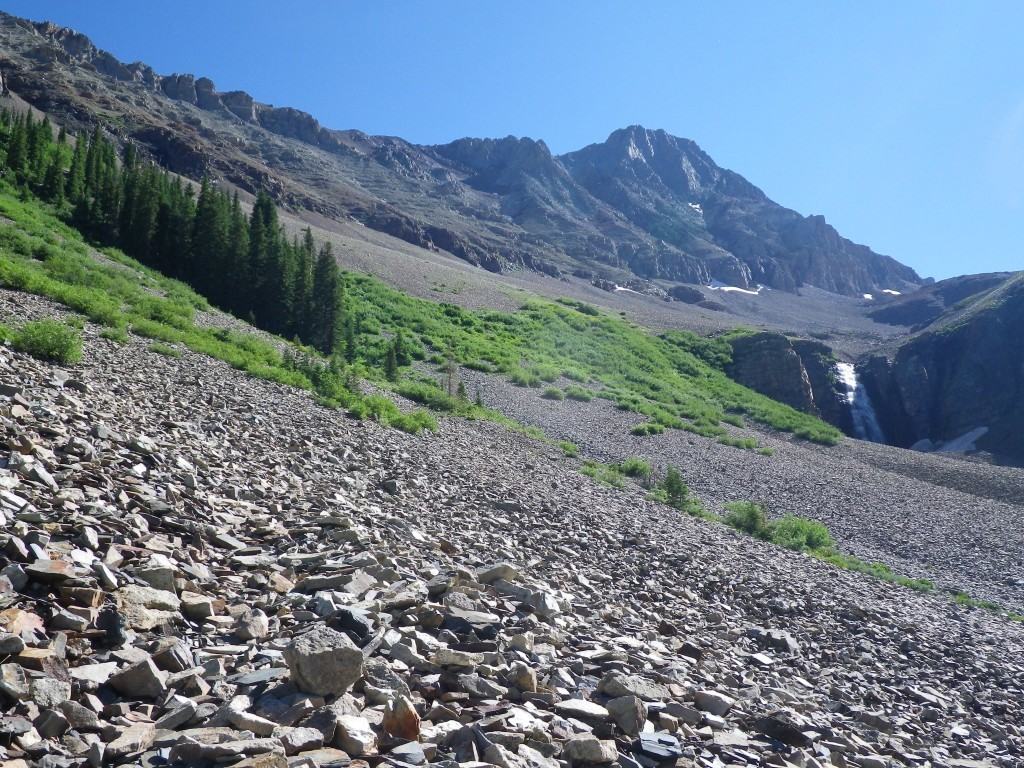Plans are shaping up for CFI’s Southwest Fourteeners Campaign that will perform major trail reconstruction and vegetation restoration work on both El Diente Peak and Mount Eolus over the next three field seasons. Proposals will be written this fall for statewide and regional foundations, outdoor companies, and the lottery-funded Colorado State Trails program that, if funded, will cover most of the costs associated with performing these projects.
Mount Eolus: Chicago Basin Route
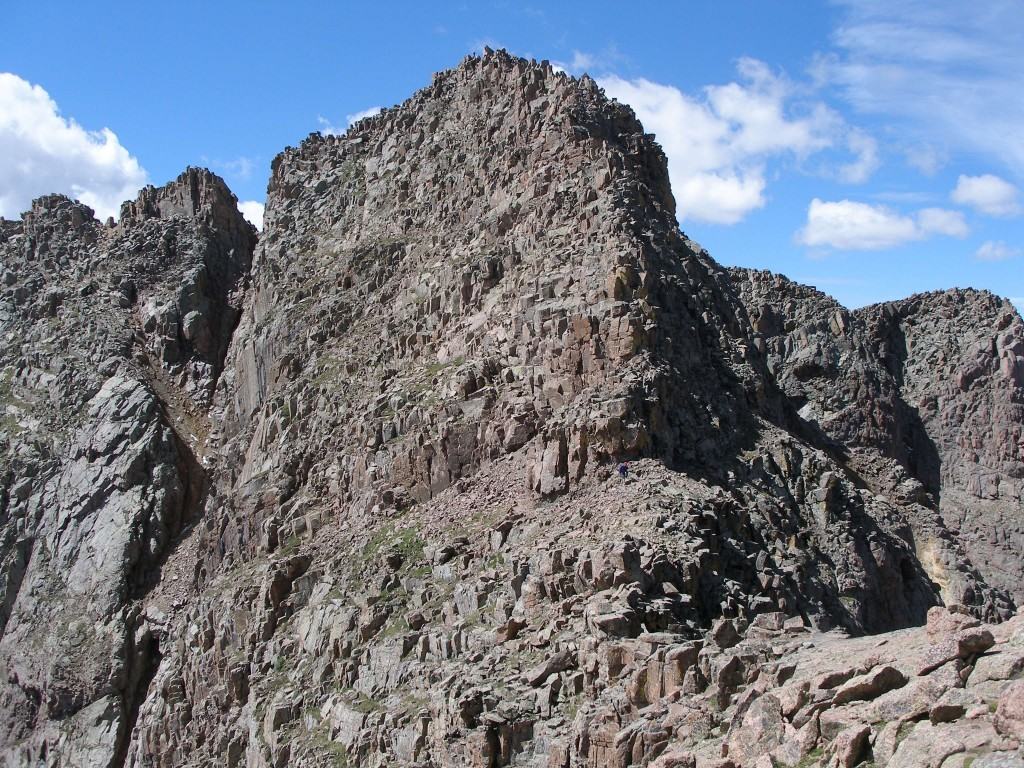
Work over two field seasons will begin in July 2013 on Mount Eolus in Chicago Basin, the last of the three Fourteeners in the area to have a sustainably located, designed, and constructed trail built. The project will build on work completed between 2007 and 2010 that completed the approach trail from the head of Chicago Basin up past Twin Lakes to the base of Windom Peak and the Red Couloir on Sunlight Peak.
Two rerouted sections will move the trail into more durable talus rather than crossing fragile alpine tundra vegetation. The major reroute on Eolus will move the fall-line trail away from the rock slabs visible in this picture and move them farther to the right in the photo below to a large talus field. Much of the existing trail that is not being rerouted needs to have comprehensive stabilization done to contain adjacent tundra beds and to prevent further erosion.
Once the trail is moved, the old, user-created route will be closed, stabilized, returned to its natural contours, and revegetated. Serious erosion like that pictured below will be minimized so that thin alpine soils will not erode away and lead to the loss of rare and fragile tundra vegetation.
Fly over the Mount Eolus trail reconstruction project.
El Diente Peak: Kilpacker Basin Route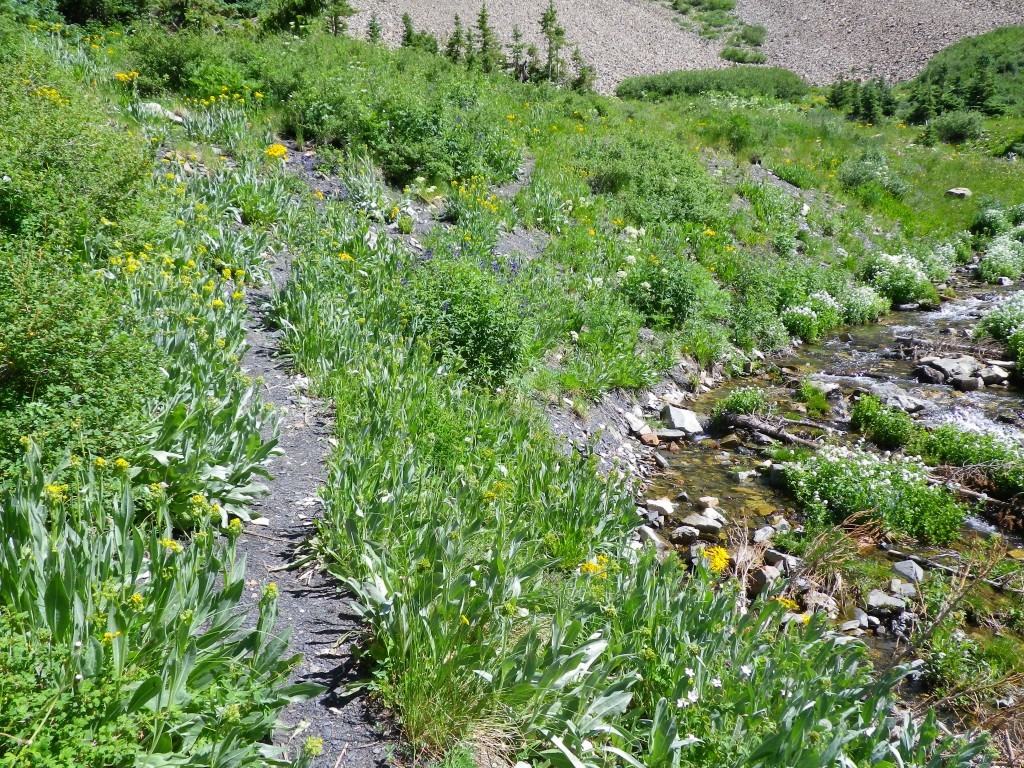
Work is planned to move in 2014 to the Kilpacker Basin approach to El Diente Peak, which is expected to take two full field seasons to complete. The unplanned access route travels through very wet, muddy areas on the initial approach that have become braided with use. Higher up the route hugs Kilpacker Creek and is damaging the riparian area. The user-created trail ascends two steep sections with grades in excess of 70% where erosion of soil is a primary concern.
Botanical surveys found several rare plants in the area of the trail corridor, including northern rockcress, San Juan whitlow grass, Colorado Divide whitlow grass, snowlover, woolly fleabane, Harbour beardtongue, and Altai stitchwort. Most of these plants are imperiled in Colorado due to few known occurrences. Ensuring that the a clearly delineated and properly constructed trail helps channel hikers away from these rare plants is vital to their long-term survival.
The planned reroute will move the trail to higher, drier, and more durable slopes to the northwest of the Kilpacker Creek. The rerouted sections will bypass the two steep sections of the existing, user-created trail, which will minimize erosion and and will provide for better trail drainage. The rerouted trail will also move from vegetated ground cover to talus, providing a more durable surface to accommodate hiking use.
Fly over the Kilpacker Basin trail reconstruction project on El Diente Peak.
Please send comments to CFI regarding these projects to: cfi@14ers.org.

